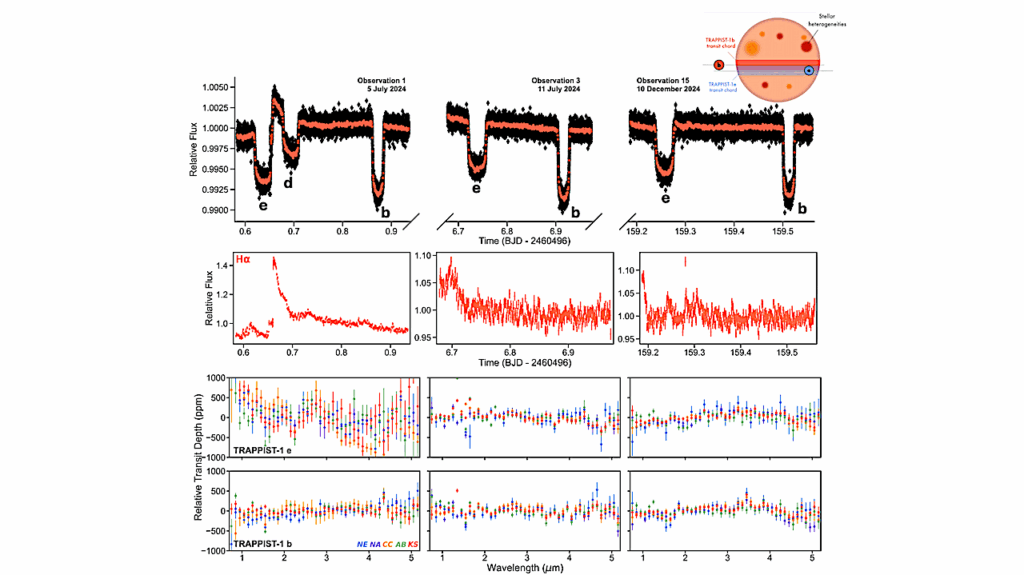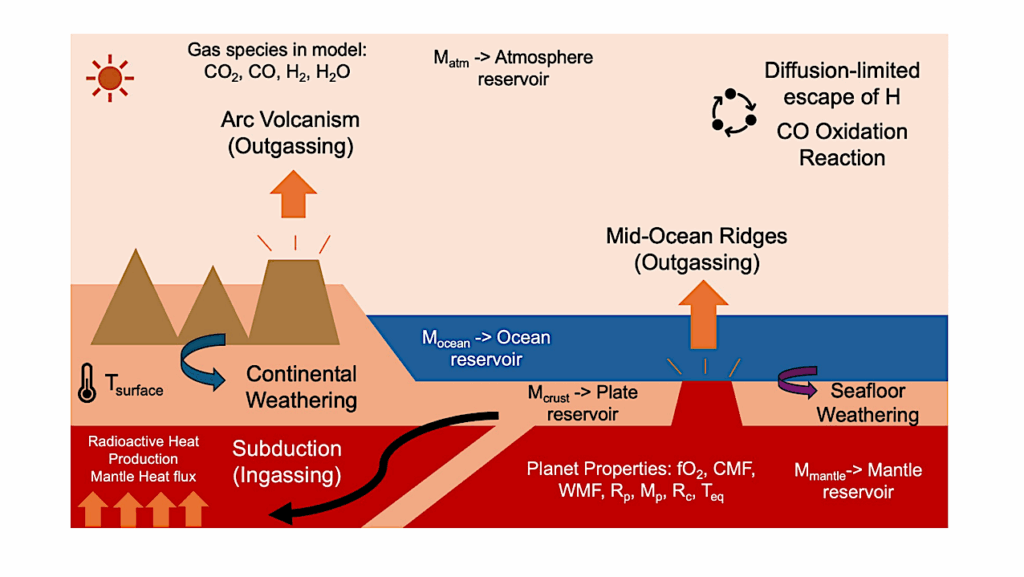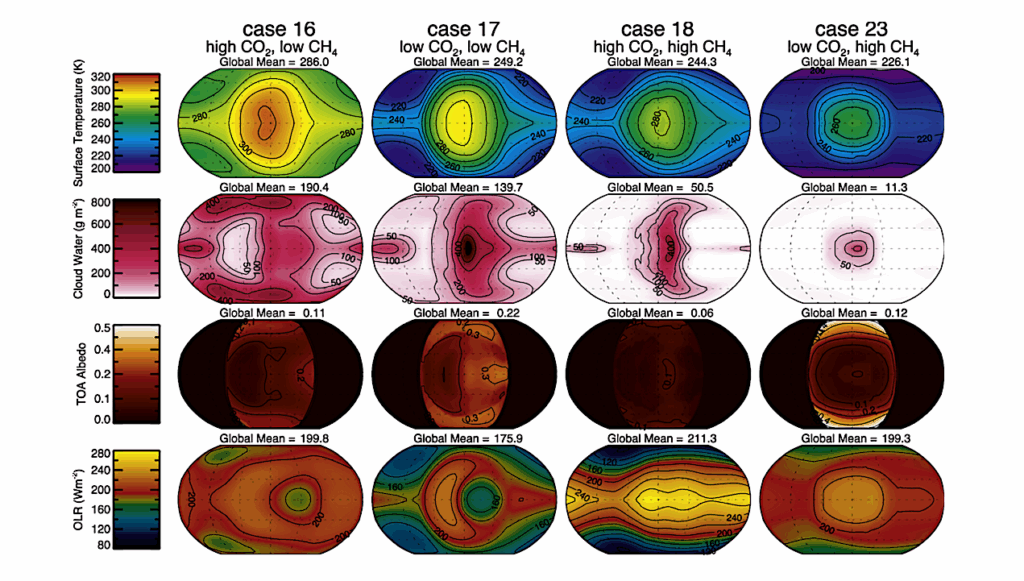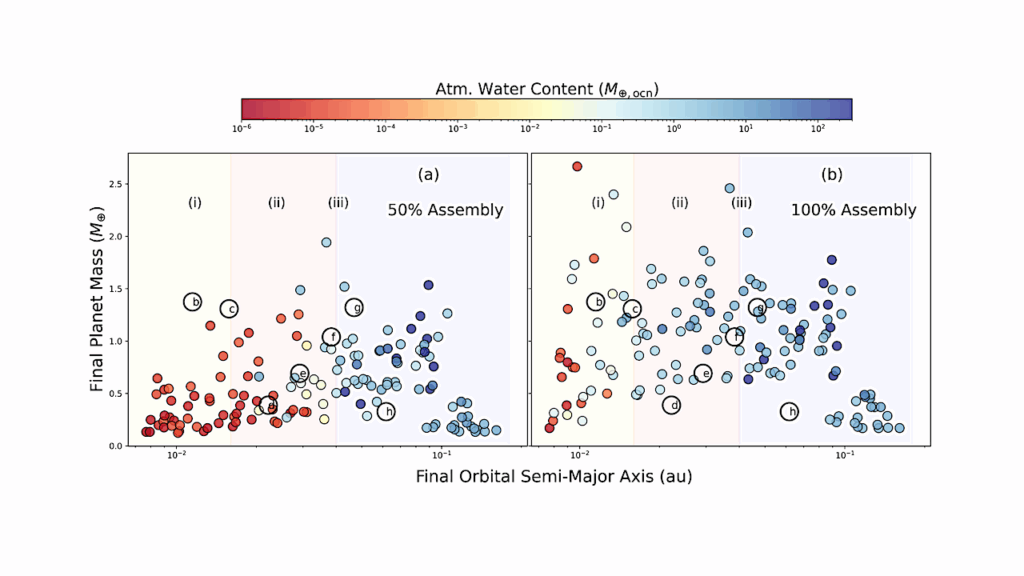Non-detection Of Helium In The Upper Atmospheres Of TRAPPIST-1b, e and f

We obtained high-resolution spectra of the ultra-cool M-dwarf TRAPPIST-1 during the transit of its planet `b’ using two high dispersion near-infrared spectrographs, IRD instrument on the Subaru 8.2m telescope and HPF instrument on the 10m Hobby-Eberly Telescope.
These spectroscopic observations are complemented by a photometric transit observation for planet `b’ using the APO/ARCTIC, which assisted us to capture the correct transit times for our transit spectroscopy. Using the data obtained by the new IRD and HPF observations, as well as the prior transit observations of planets `b’, `e’ and `f’ from IRD, we attempt to constrain the atmospheric escape of the planet using the He I triplet 10830 Å absorption line. We do not detect evidence for any primordial extended H-He atmospheres in all three planets.
To limit any planet related absorption, we place an upper limit on the equivalent widths of <7.754 mÅ for planet `b', <10.458 mÅ for planet `e', and <4.143 mÅ for planet `f' at 95% confidence from the IRD data, and <3.467 mÅ for planet `b' at 95% confidence from HPF data. Using these limits along with a solar-like composition isothermal Parker wind model, we attempt to constrain the mass-loss rates for the three planets. For TRAPPIST-1b, our models exclude the highest possible energy-limited rate for a wind temperature <5000 K. This non-detection of extended atmospheres having low mean-molecular weight in all three planets aids in further constraining their atmospheric composition by steering the focus towards the search of high molecular weight species in their atmospheres.
Vigneshwaran Krishnamurthy, Teruyuki Hirano, Guðmundur Stefánsson, Joe P. Ninan, Suvrath Mahadevan, Eric Gaidos, Ravi Kopparapu, Bunei Sato, Yasunori Hori, Chad F. Bender, Caleb I. Cañas, Scott A. Diddams, Samuel Halverson, Hiroki Harakawa, Suzanne Hawley, Fred Hearty, Leslie Hebb, Klaus Hodapp, Shane Jacobson, Shubham Kanodia, Mihoko Konishi, Takayuki Kotani, Adam Kowalski, Tomoyuki Kudo, Takashi Kurokawa, Masayuki Kuzuhara, Andrea Lin, Marissa Maney, Andrew J. Metcalf, Brett Morris, Jun Nishikawa, Masashi Omiya, Paul Robertson, Arpita Roy, Christian Schwab, Takuma Serizawa, Motohide Tamura, Akitoshi Ueda, Sébastien Vievard, John Wisniewski
Comments: 11 pages; 4 figures; Accepted for publication in AJ
Subjects: Earth and Planetary Astrophysics (astro-ph.EP)
Cite as: arXiv:2106.11444 [astro-ph.EP] (or arXiv:2106.11444v1 [astro-ph.EP] for this version)
Submission history
From: Vigneshwaran Krishnamurthy
[v1] Mon, 21 Jun 2021 23:06:18 UTC (3,800 KB)
https://arxiv.org/abs/2106.11444
Astrobiology, Astrochemistry,








